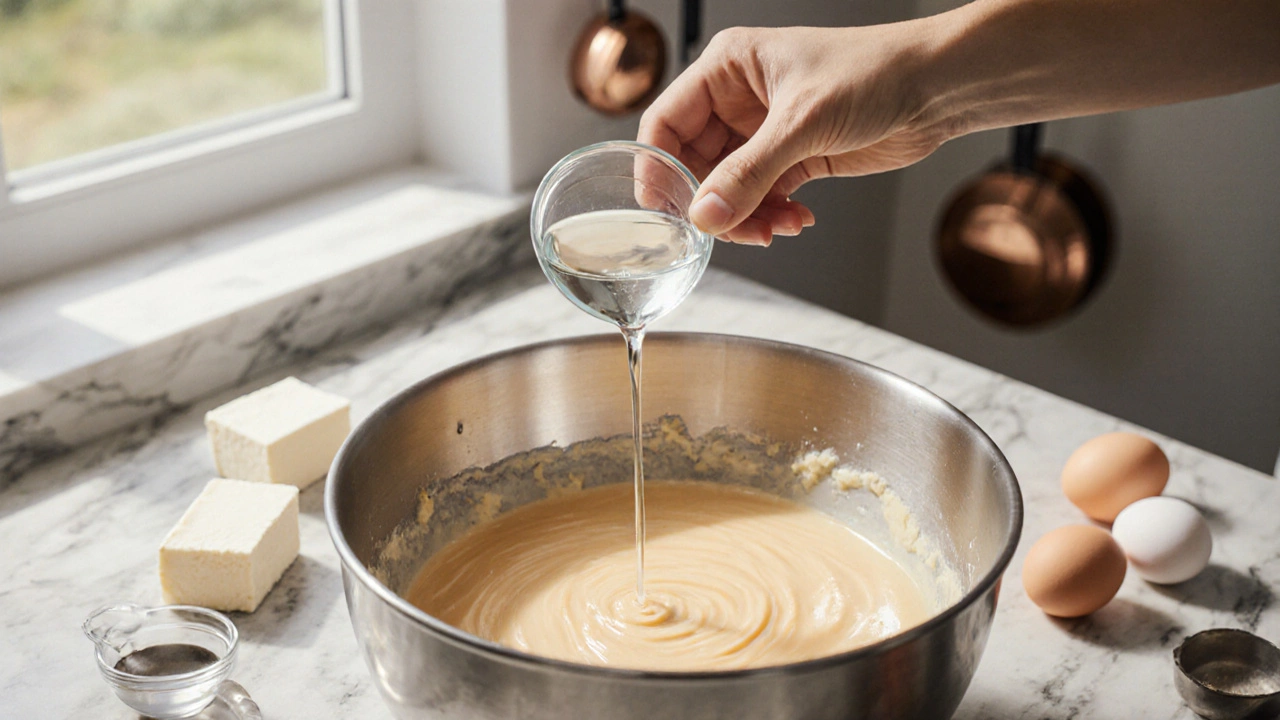Why Add Vinegar to Cheesecake? The Science Behind the Secret Ingredient
Discover why a splash of vinegar is a secret weapon in cheesecake, how much to use, best types, substitutes, and troubleshooting tips for flawless results.
When working with vinegar in cheesecake, a dash of mild acid added to the batter to improve crumb and balance sweetness. Also known as acidic boost, it helps proteins in the cream cheese set more evenly, keeping the final slice creamy rather than grainy. The technique belongs to the broader world of cheesecake, a rich dessert that layers a cream cheese base with a crust, often flavored with fruit or chocolate. Many bakers pair this with sour cream, a tangy dairy product that adds moisture and a light bite and double cream, a high‑fat dairy that yields a velvety mouthfeel. The acidity from vinegar enhances the texture of cheesecake while complementing the richness of sour cream and the silkiness of double cream. Below we’ll see how this simple ingredient fits into a few key baking concepts.
The core of any cheesecake is a blend of cream cheese, sugar, and eggs. When you add a tablespoon of white vinegar or apple cider vinegar, the liquid’s low pH gently denatures the proteins in the cream cheese. This denaturation creates a tighter network that traps air bubbles, resulting in a smoother, more stable crumb. Think of it like the way lemon juice helps curdle milk for paneer – the same principle works here, just on a smaller scale. The added acid also cuts through the richness, so the final taste isn’t cloying. Pairing vinegar with sour cream is a natural fit because sour cream already brings a mild tang; together they prevent the dessert from feeling heavy. Double cream, on the other hand, supplies the fat needed for that melt‑in‑your‑mouth feel, while the vinegar keeps the mixture from becoming overly dense. Bakers who skip the acid often report a grainy texture or a cheesecake that cracks when cooled. By contrast, a quick splash of vinegar gives a uniform set, whether you bake a classic New York style or a no‑bake chilled version.
Beyond texture, vinegar can be a flavor enhancer. A half‑teaspoon of apple cider vinegar adds a subtle fruitiness that pairs well with berry swirls, caramel ribbons, or chocolate ganache. It’s especially useful when you’re aiming for a low‑sugar recipe; the vinegar’s brightness makes the dessert taste sweeter without extra sugar. This is why many of the articles in this collection discuss related topics such as the role of sour cream in cheesecake, the difference between double cream and whipping cream, and how to keep fudge soft – all share the same goal of balancing richness with a touch of acidity. As you scroll down, you’ll find guides that walk you through the exact measurements, the timing for adding vinegar, and troubleshooting tips for common problems like cracks or watery centers. Armed with this knowledge, you’ll be ready to experiment with vinegar in any cheesecake recipe and achieve a consistently smooth, flavorful result.

Discover why a splash of vinegar is a secret weapon in cheesecake, how much to use, best types, substitutes, and troubleshooting tips for flawless results.